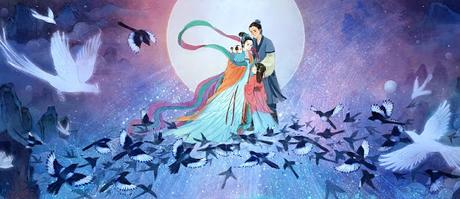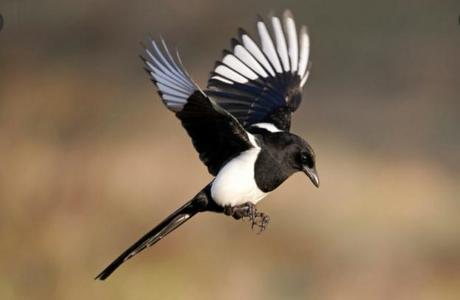 Korea has it as their National Bird and when their children lose a tooth they throw it on the roof while singing a song for the bird. The Magpie will hear the song and bring them a new tooth. I rather like that.From this we can see that the Magpie is a common bird around the world but I shall stick to the UK for now where the Magpie has a reputation for stealing glittery objects to line their nest, not for practical reasons but just for the look. But a study published last year in the journal Animal Cognition seems to discredit this behavior. Researchers found no evidence magpies were attracted to shiny objects offered to them, indeed the birds shunned the gifts. Instead they had ‘neophobia’ the researchers claimed; the birds were afraid of the unfamiliar, wary of the baubles.I found it fascinating that the magpie is one of the most intelligent birds—and one of the most intelligent animals to exist. Their brain-to-body-mass ratio is outmatched only by that of humans and equals that of aquatic mammals and great apes.Magpies have shown the ability to make and use tools, imitate human speech, grieve, play games, and work in teams. When one of their own kind dies, a grouping will form around the body for a ‘funeral’ of squawks and cries. To portion food to their young, magpies will use self-made utensils to cut meals into proper sizes.Magpies are also capable of passing a cognitive experiment called the ‘mirror test’ which proves an organism’s ability to recognize itself in a reflection. To perform this test, a coloured dot is placed on animals, or humans, in a place that they will be able to see only by looking into a mirror. Subjects pass if they can look at their reflection and recognize that the mark is on themselves and not another, often by attempting to reach and remove it. Passing the mirror test is a feat of intelligence that only four other animal species can accomplish.For some reason there are many collective nouns for a group of magpies. One site I found had eleven but perhaps the most common are conventicle, gulp, mischief, tidings or tribe. I’m going for a Gulp as it is just so bizarre.
Korea has it as their National Bird and when their children lose a tooth they throw it on the roof while singing a song for the bird. The Magpie will hear the song and bring them a new tooth. I rather like that.From this we can see that the Magpie is a common bird around the world but I shall stick to the UK for now where the Magpie has a reputation for stealing glittery objects to line their nest, not for practical reasons but just for the look. But a study published last year in the journal Animal Cognition seems to discredit this behavior. Researchers found no evidence magpies were attracted to shiny objects offered to them, indeed the birds shunned the gifts. Instead they had ‘neophobia’ the researchers claimed; the birds were afraid of the unfamiliar, wary of the baubles.I found it fascinating that the magpie is one of the most intelligent birds—and one of the most intelligent animals to exist. Their brain-to-body-mass ratio is outmatched only by that of humans and equals that of aquatic mammals and great apes.Magpies have shown the ability to make and use tools, imitate human speech, grieve, play games, and work in teams. When one of their own kind dies, a grouping will form around the body for a ‘funeral’ of squawks and cries. To portion food to their young, magpies will use self-made utensils to cut meals into proper sizes.Magpies are also capable of passing a cognitive experiment called the ‘mirror test’ which proves an organism’s ability to recognize itself in a reflection. To perform this test, a coloured dot is placed on animals, or humans, in a place that they will be able to see only by looking into a mirror. Subjects pass if they can look at their reflection and recognize that the mark is on themselves and not another, often by attempting to reach and remove it. Passing the mirror test is a feat of intelligence that only four other animal species can accomplish.For some reason there are many collective nouns for a group of magpies. One site I found had eleven but perhaps the most common are conventicle, gulp, mischief, tidings or tribe. I’m going for a Gulp as it is just so bizarre.
Also bizarre is the old rhyme about Magpies. I only knew the first few lines but came across the following, apparently a Lancashire version:
One for sorrow
Two for joy
Three for a girl
Four for a boy
Five for silver
Six for gold
Seven for a secret
Never to be told
Eight for a wish
Nine for a kiss
Ten a surprise you should be careful not to miss
Eleven for health
Twelve for wealth
Thirteen beware it’s the devil himself.
Terry Quinn Email ThisBlogThis!Share to TwitterShare to Facebook
